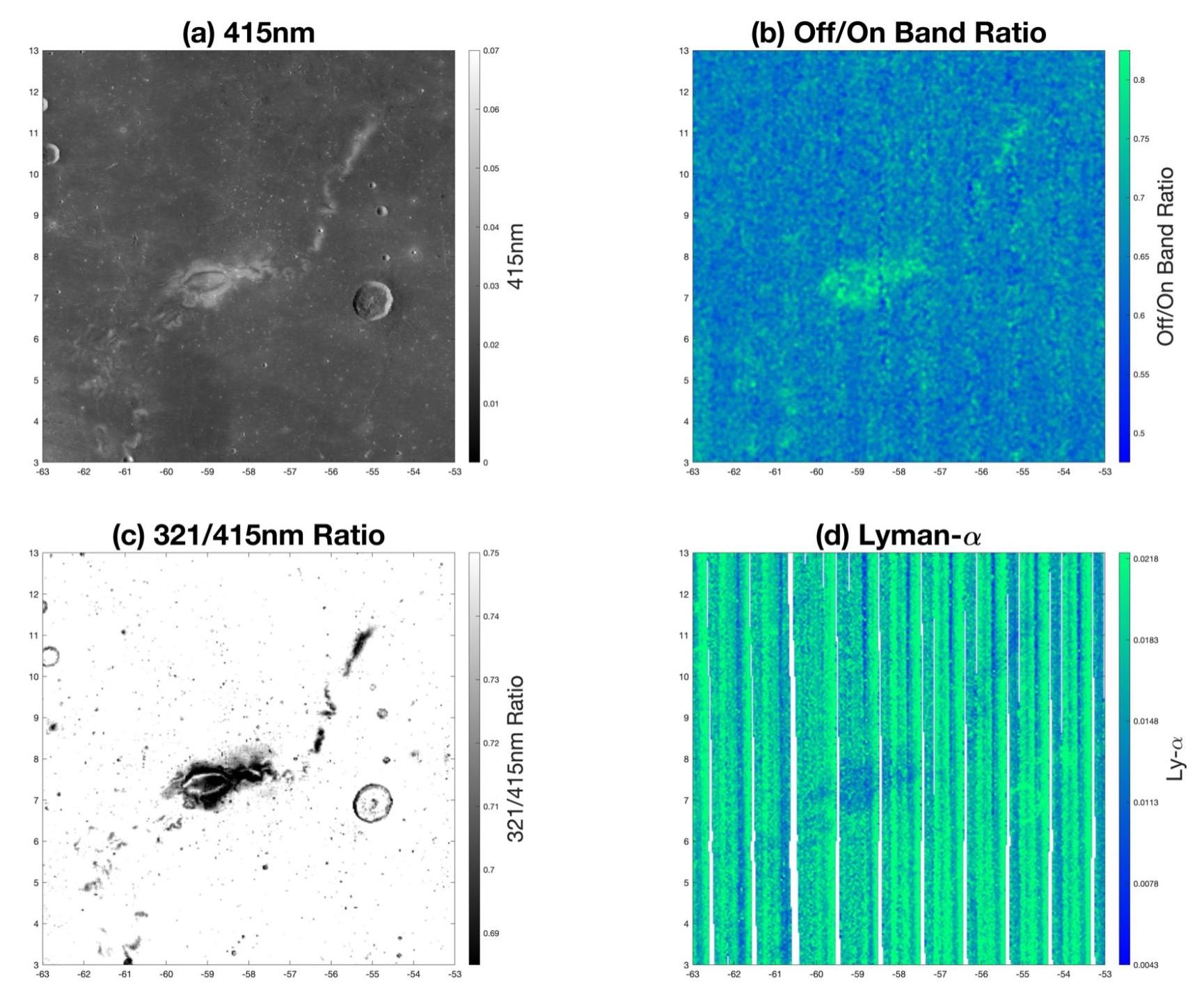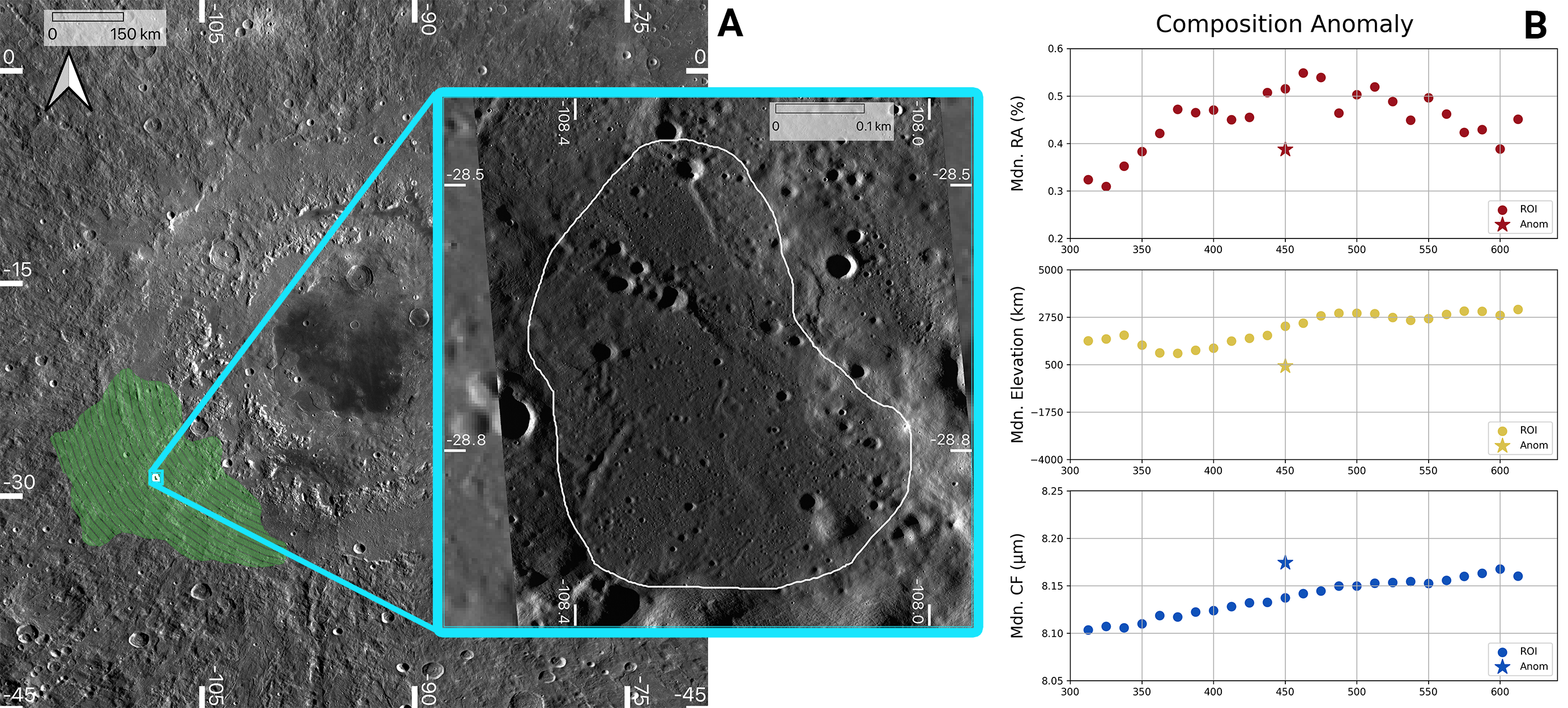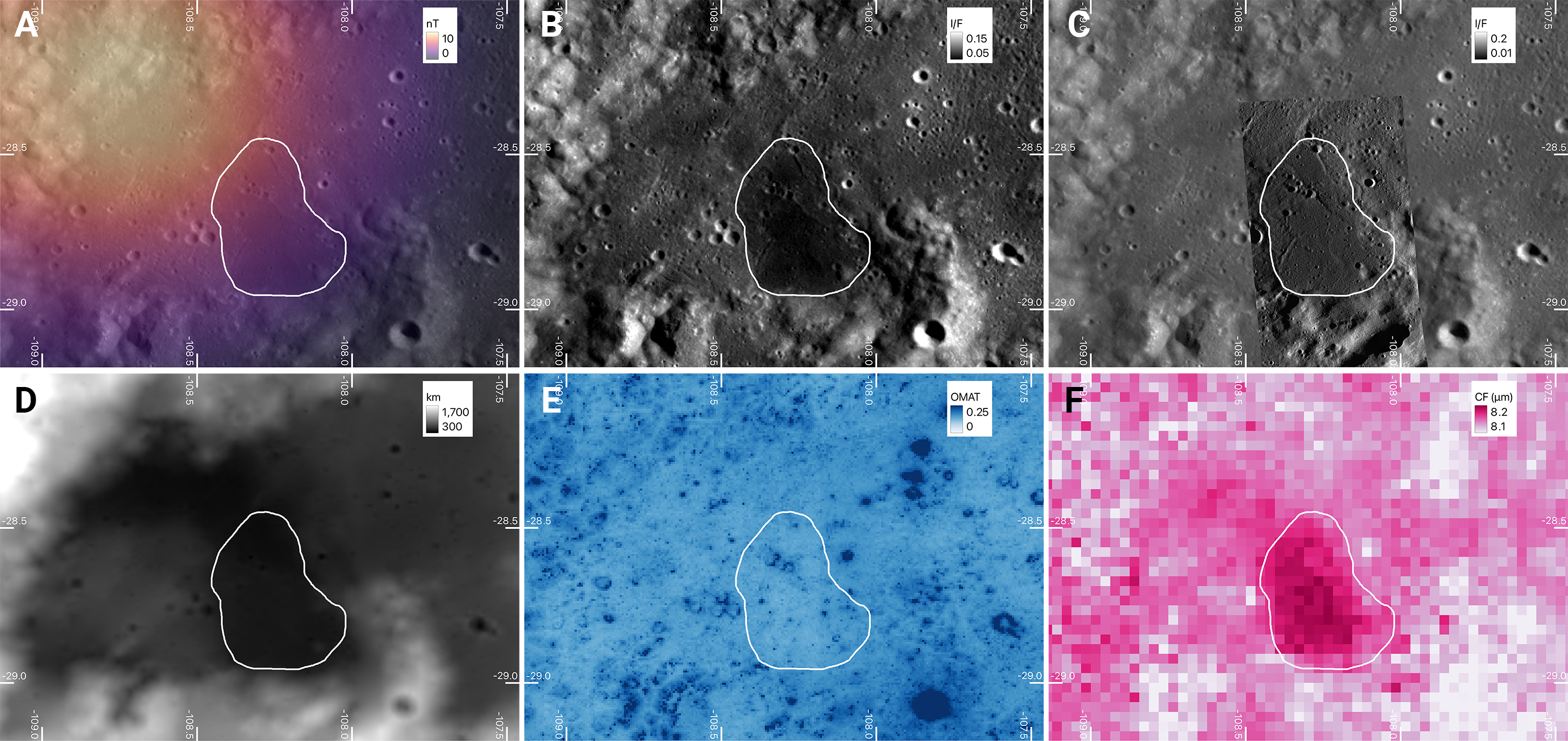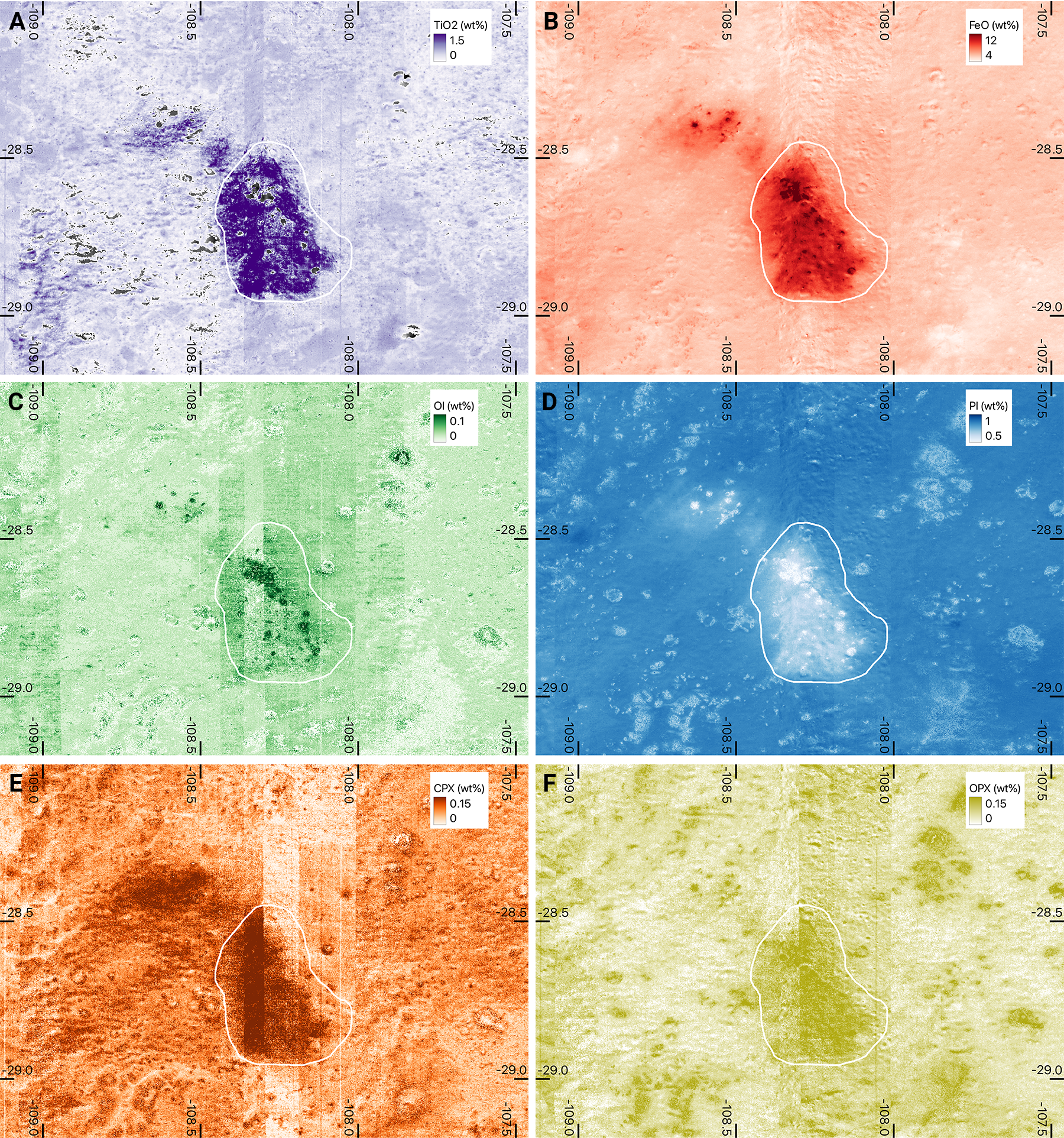Space Weathering and Composition Analysis
Lunar Swirls
I have worked with the Lunar Reconnaissance Orbiter Lyman Alpha Mapping Project (LAMP) team, studying lunar magnetism through the lens of UV-visible wavelength spectroscopy. I focused on the intersection of these observations to interpret how space weathering manifests upon the lunar regolith. Space weathering expression is wavelength-dependent, with ultraviolet wavelengths being most sensitive to the effects of weathering, which produces submicroscopic iron particles that are more surface scattering than volume scattering, brightening and bluing in the UV but darkening and reddening in the visible to near-infrared portion of the spectrum. Below is a visualization of this wavelength-dependent sensitivity at the lunar swirl known as Reiner Gamma from my master's thesis work, which involved mapping and analyzing four ultraviolet wavelength datasets from the Lunar Reconnaissance Orbiter (LRO) Wide Angle Camera and Lyman-Alpha Mapping Project (see Waller et al., 2022). We found that regions of the magnetic anomaly associated with the swirl that are more susceptible to compression by solar wind show signs of relatively increased weathering when compared to regions of the swirl that experience less compression, indicating that space weathering may be reduced overall at lunar swirls, but within a swirl, the complex patterns in reflectance show variegation that may be due to less efficient solar wind standoff as a function of magnetic topology.

Orientale Basin
I have also worked with the Lunar Reconnaissance Orbiter Mini-RF team, investigating fundamental electromagnetic interactions in radar data and subsurface structures that may cause unique roughness expressions. We studied regional statistics in multiple datasets across Orientale Basin to understand its uniquely immature signatures in radar data, and discovered a previously-unmapped mare in an anomalously rocky region to the southwest of the basin (see Waller et al. 2025b).

This small basalt lake lies in a topographic low that extends northwest towards a local magnetic anomaly, which may be embedded in cryptomare that is indicated near Orientale in radar data. Future work to explore this subsurface source may reveal more information about magnetization depths in the southwestern region of Orientale.

(A) The small mare (white boundary) at the edge of a localized magnetic anomaly. (B) LROC WAC I/F, stretched to reveal the mare extent (white boundary). (C) LROC NAC ROI over the extent (white boundary). (D) LOLA DEM elevation over the extent (white boundary). (E) Kaguya MI OMAT over the extent (white boundary). (F) Diviner Christiansen Feature over the extent (white boundary).
The deposit is low-Ti and relatively mafic (high CPX, low plag), which is consistent with mare near Orientale.

The mare noted above is outlined with a white boundary. (A) TiO2 abundance (wt%). (B) FeO abundance (wt%). (C) Olivine abundance (wt%). (D) Plagioclase abundance (wt%). (E) Clinopyroxene abundance (wt%). (F) Orthopyroxene abundance (wt%).
